

基本设计与实施设计 日建设计
项目位置 日本东京
建成时间 2020年
建筑面积 180,195平方米(包括中庭约6,700平方米)
本文文字由设计单位提供。
新宿住友大厦作为日本第一座超过200米的超高层建筑,于1974年诞生于东京超高层建筑街区西新宿。其翻新规划与三角广场大屋顶架设方案,通过妥善的维护保全解决了大型建筑的功能更新问题,同时成为循环型社会的模板,为解决日本各地日益突出的城市问题提供参考。此外,作为一次社会性的挑战,此次翻新还将为曾是商务中心的副都心地区带来“繁华”和“回游性”等新的附加值。
The Shinjuku Sumitomo Building was built in 1974 in Tokyo’s Nishi Shinjuku district. The site’s expansive “Sankaku Hiroba” (triangular plaza) atrium roof, along with associated renovations, offer a sustainable model for addressing an emerging problem for Japan’s cities: how to carry out renovation projects on large-scale buildings using good maintenance practices. The project also represents a greater societal effort to enliven the urban business district and enhance its value as an accessible gathering place.

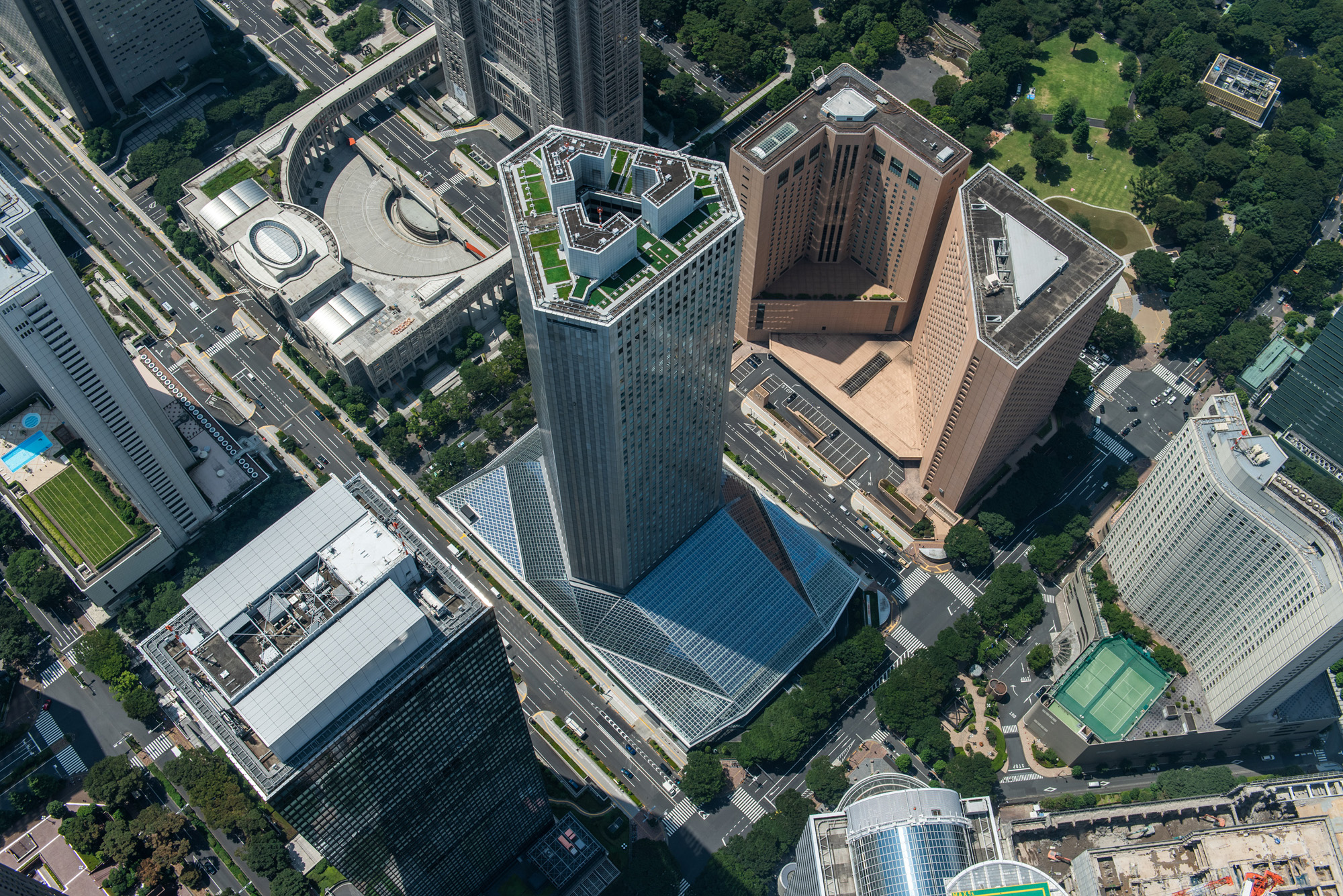
为商业区带来繁华的公共空间
经历无数探索与挑战,新宿住友大厦借助当时的技术创新才最终得以实现。然而,在建成近30年后的2000年左右,西新宿商业区的发展已日渐成熟,振兴繁荣多元化城市成为片区的全新挑战。
The building’s construction was a venture into the unknown, so to speak, made possible through innovation and new technologies for tackling numerous challenges. By the early 2000s, nearly 30 years since its completion, the Nishi Shinjuku area had matured as a business district and faced the challenge of how to invigorate an increasingly diverse city.
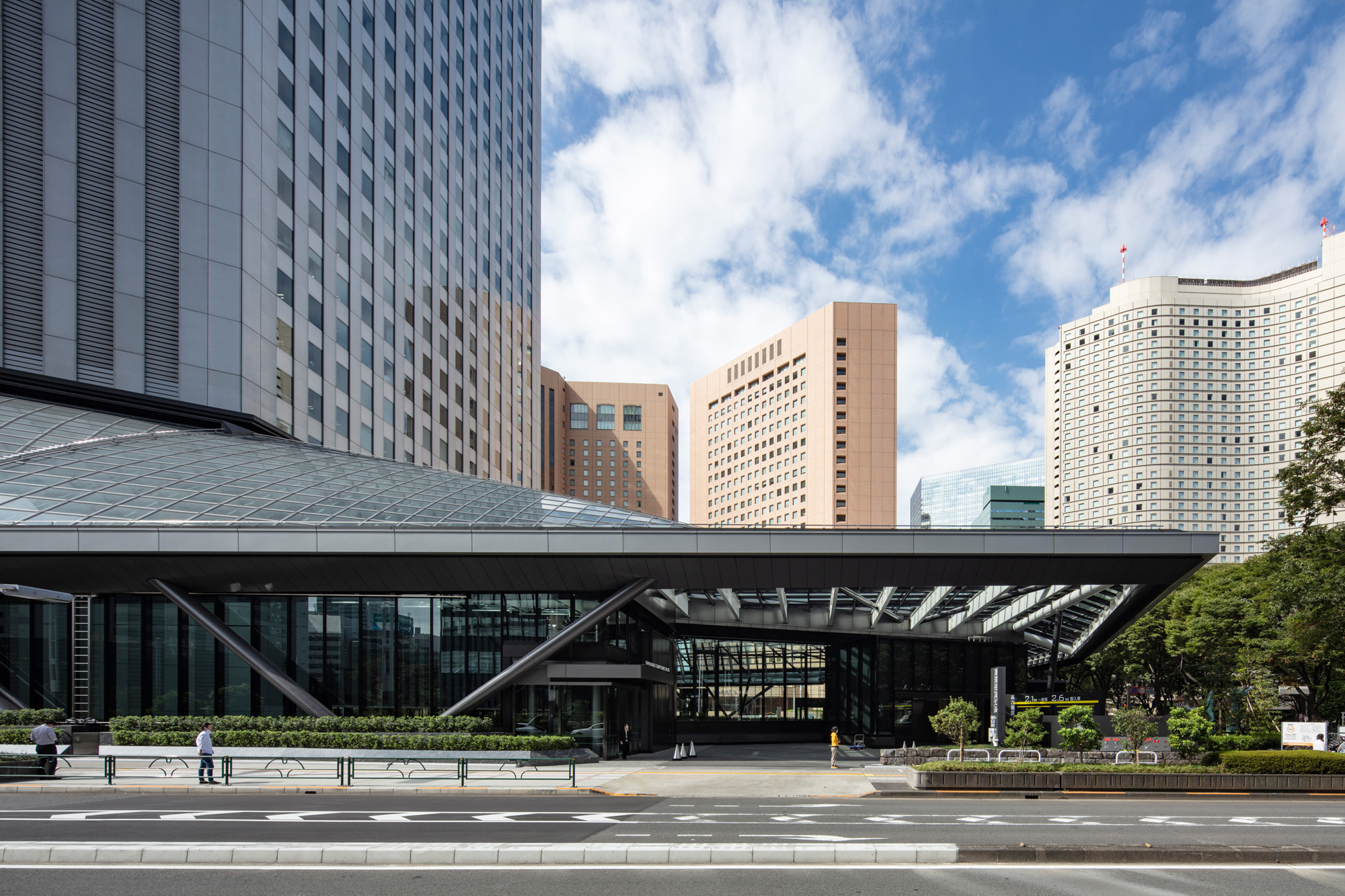
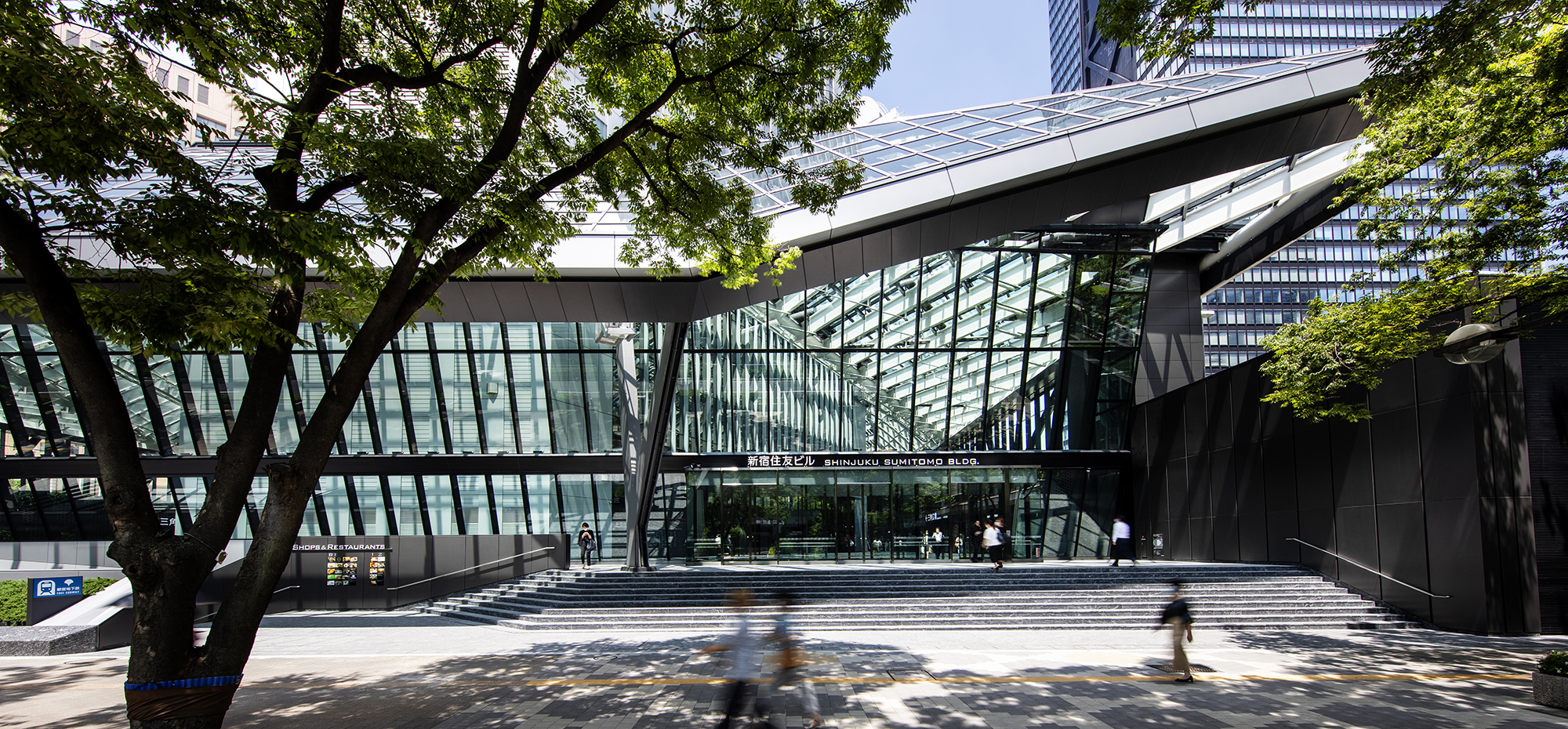
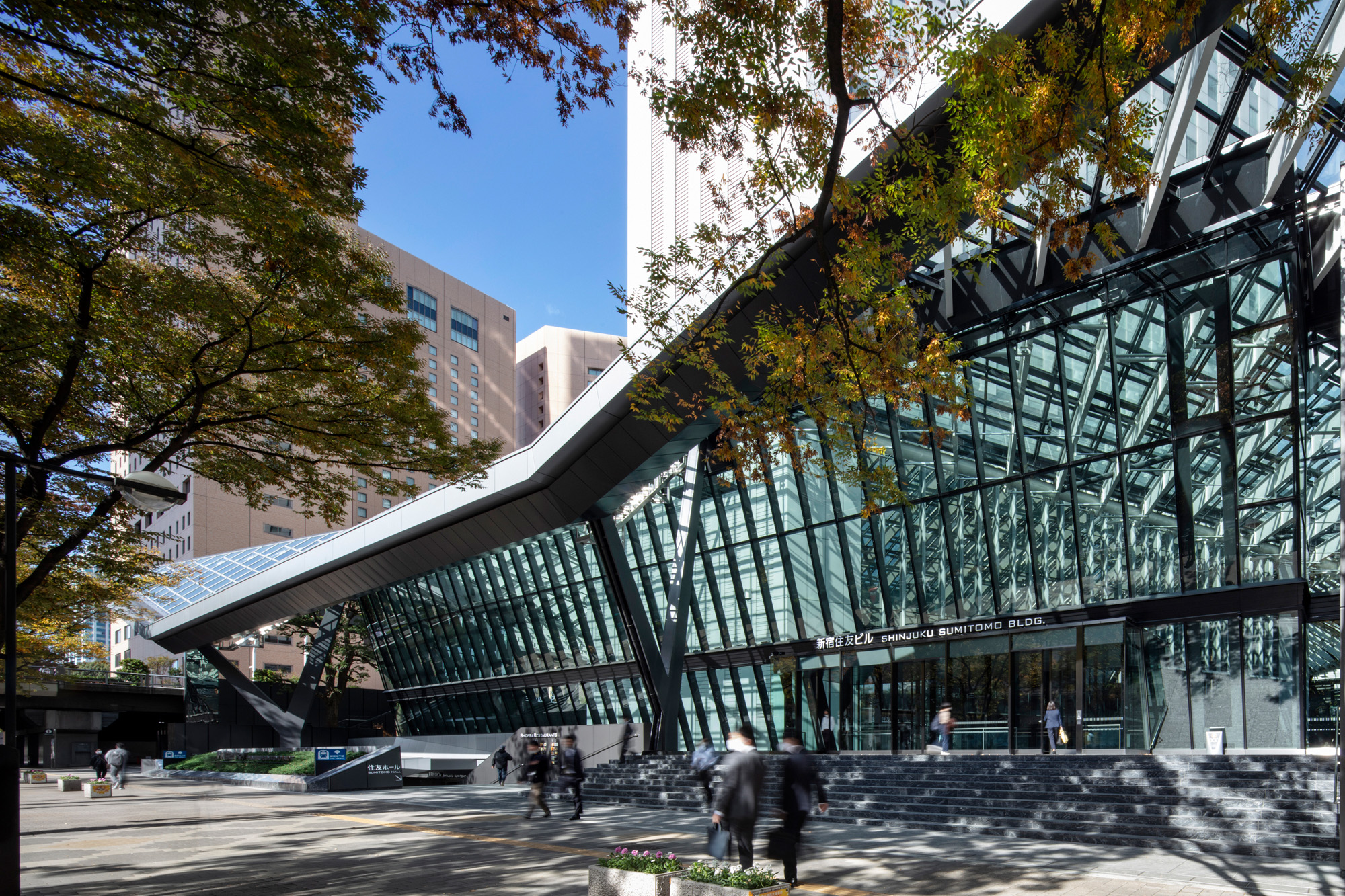
为解决这一问题,新宿当地政府和民间企业长期以来齐心协力,共同推进新宿地区的城市结构重组工作,并不断取得相应成果。作为其成果之一,用大玻璃屋顶覆盖新宿住友大厦的户外广场,实现了在私有土地上构筑公共空间的成功实践。该室内公共空间将成为新宿发展的加速器,我们期待它作为城市空间焕发新生,带动周边成为更具活力的魅力街区,并展现超高层建筑改造的巨大潜力。
To that end, Shinjuku’s public and private sectors joined hands in a reorganizing effort that is finally bearing fruit. Among them is the public space built in the privately owned area of the building’s outdoor plaza, covered with a massive glass roof. Hopes are high that this indoor space will spark a transformation of metropolitan Shinjuku into a more lively and appealing city. The project is more than a mere makeover; it shows the great potential of such high-rise renovations that aim for urban functionality and value enhancement to meet the demands of a new era.
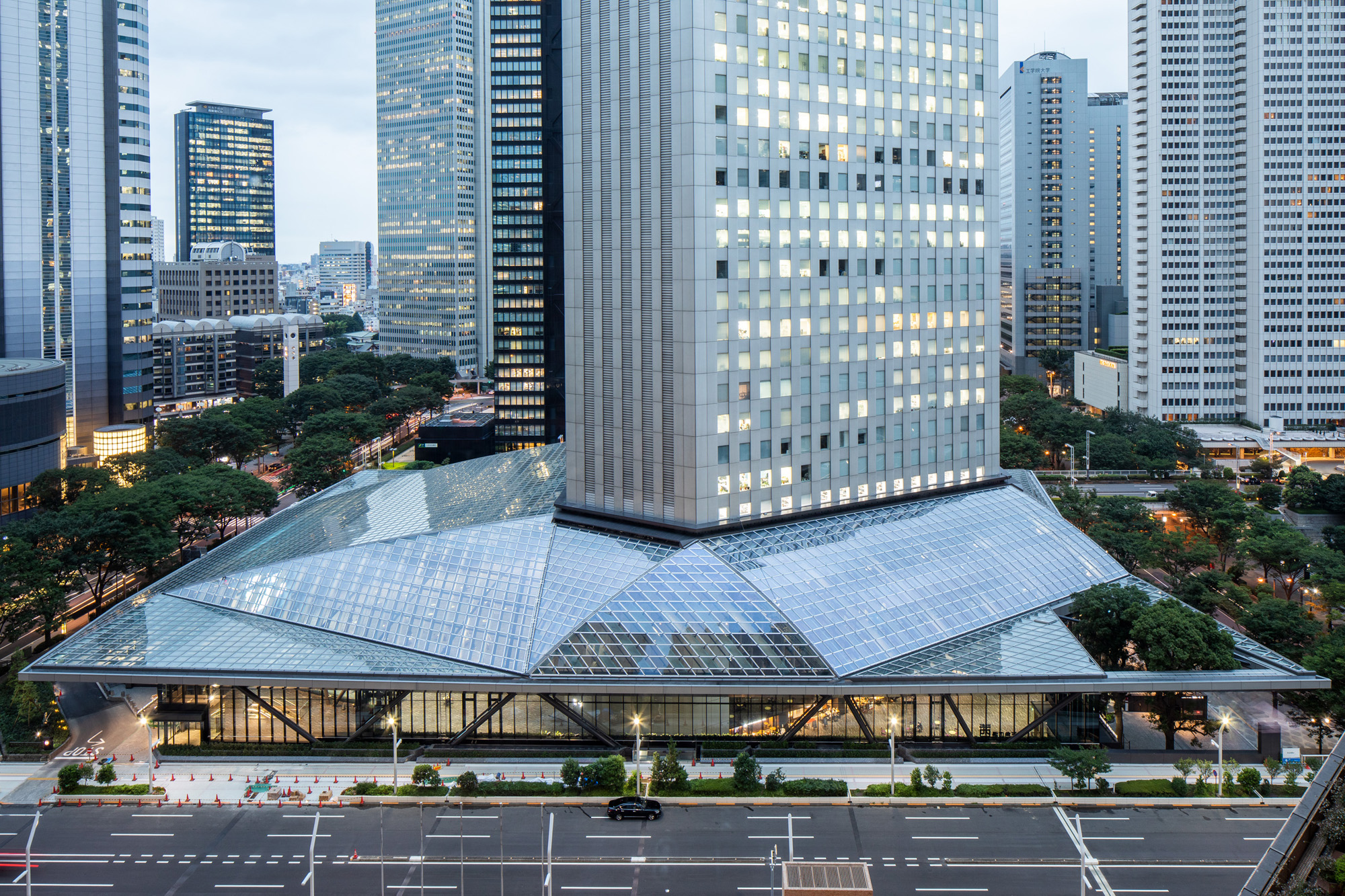
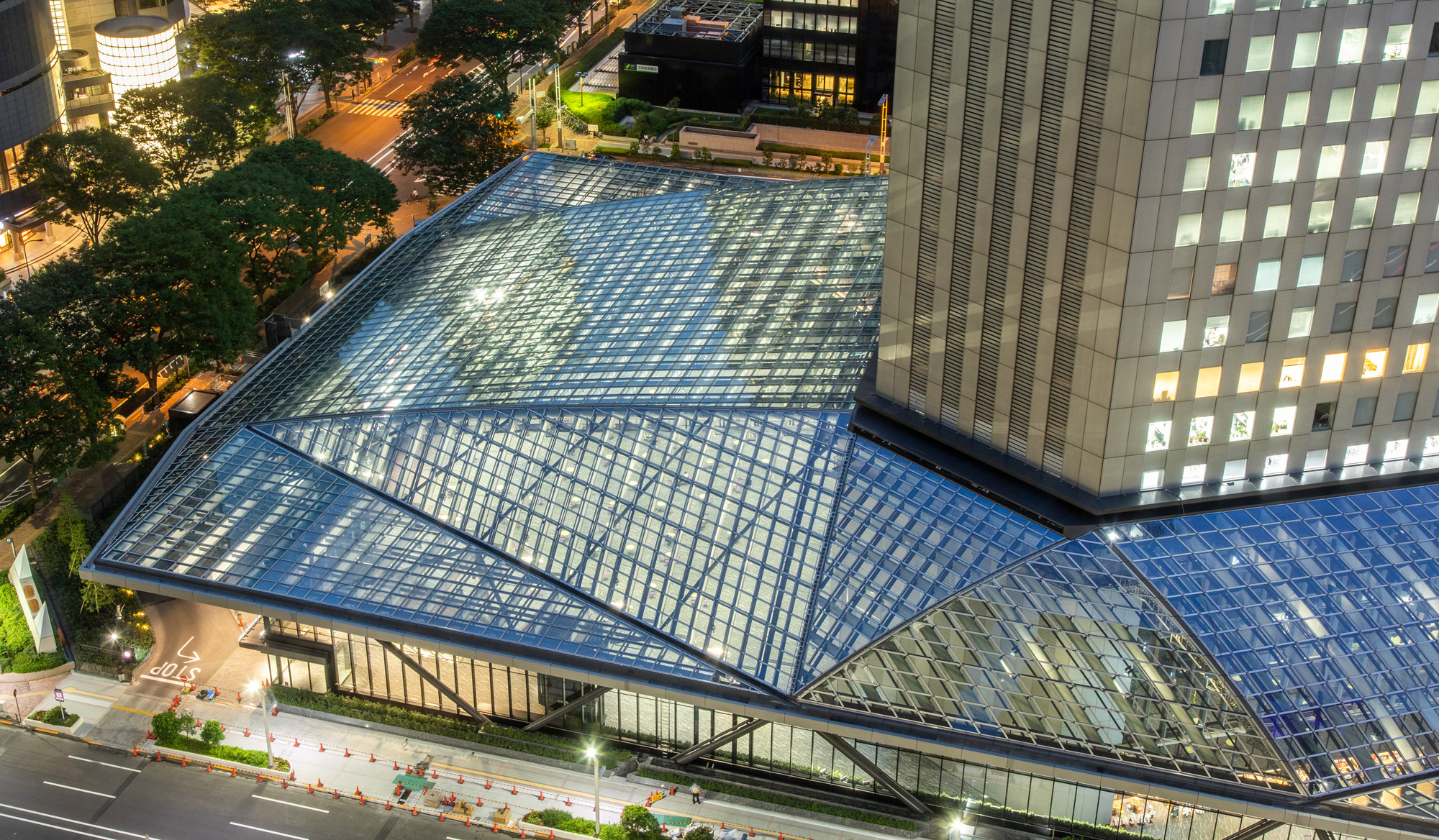
翻新运营中的超高层建筑
本项目在大楼使用的同时进行施工,大玻璃屋顶的架设和原有设施的大规模翻新并行。覆盖广场的大屋顶通过钢结构实现大屋顶(长140米、宽90米、高25米)的无柱空间。通过地面结构缝实现与原有建筑在结构上的分离,并将支撑大屋顶的支柱集中于地块外围和原有建筑外围部分。科学合理的位置选择,不仅易于加固原有主体结构,还可减少对设备更新的影响。
This project was undertaken while the building remained in use. Construction of the glass roof was performed concurrently with major repair work. The huge steel-structured roof (L:140m, W:90m, H:25m) covers a central space devoid of columns. Expansion joints were used above ground so the roof could be structurally independent. Roof-supporting columns were strategically concentrated along the site’s perimeter and the existing periphery in order to minimize the effects on facility renewal and other activities.

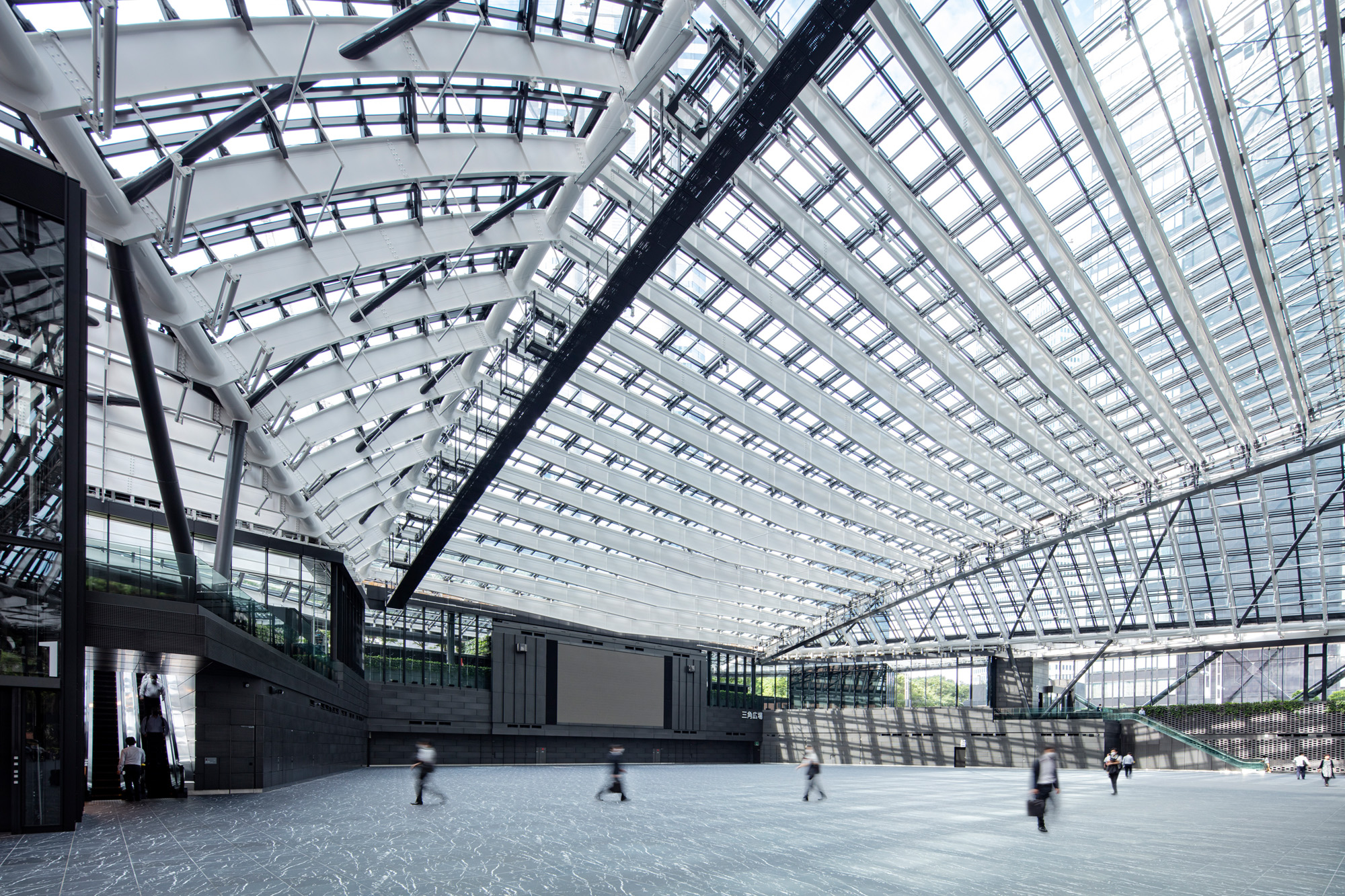
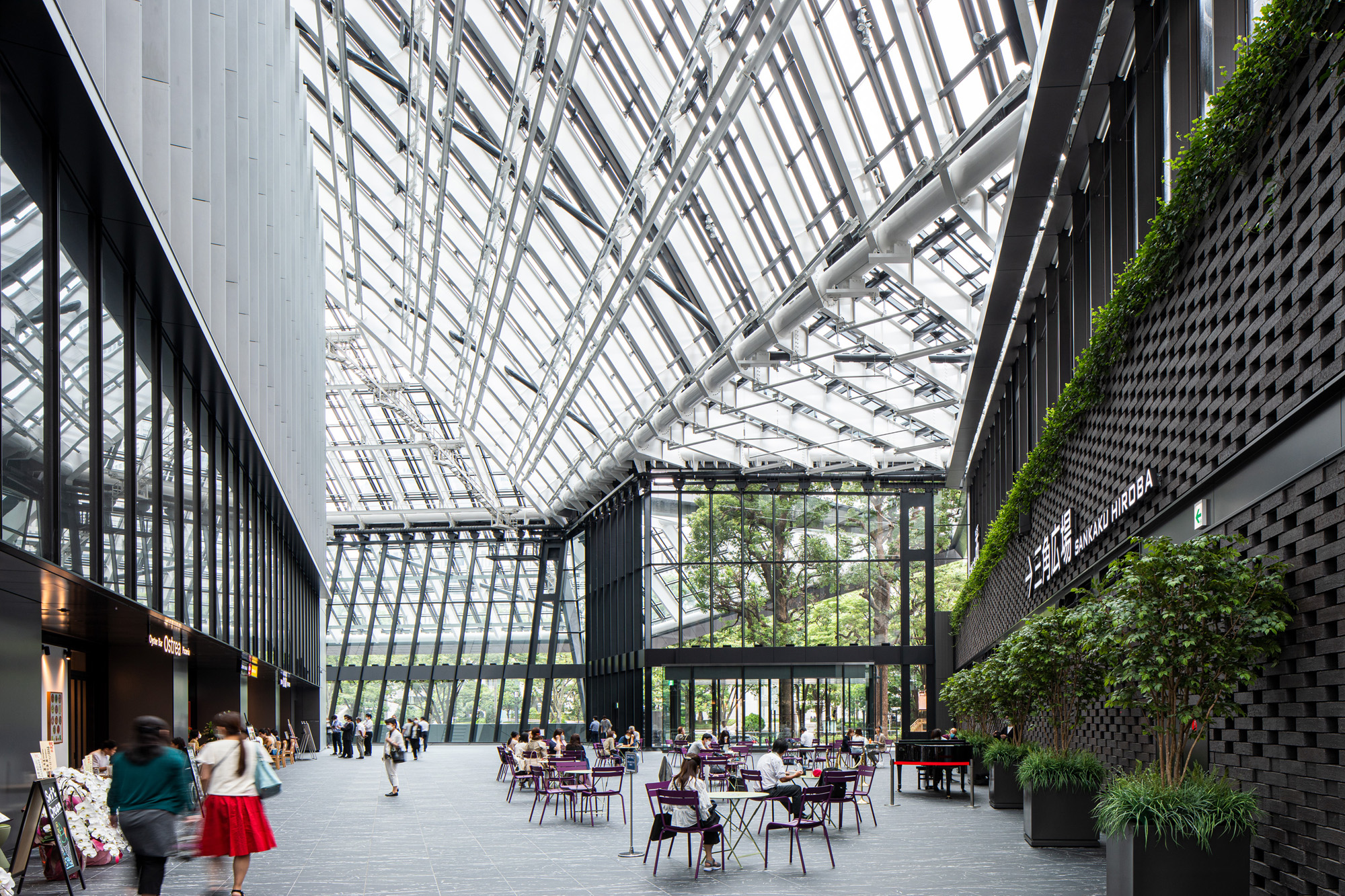
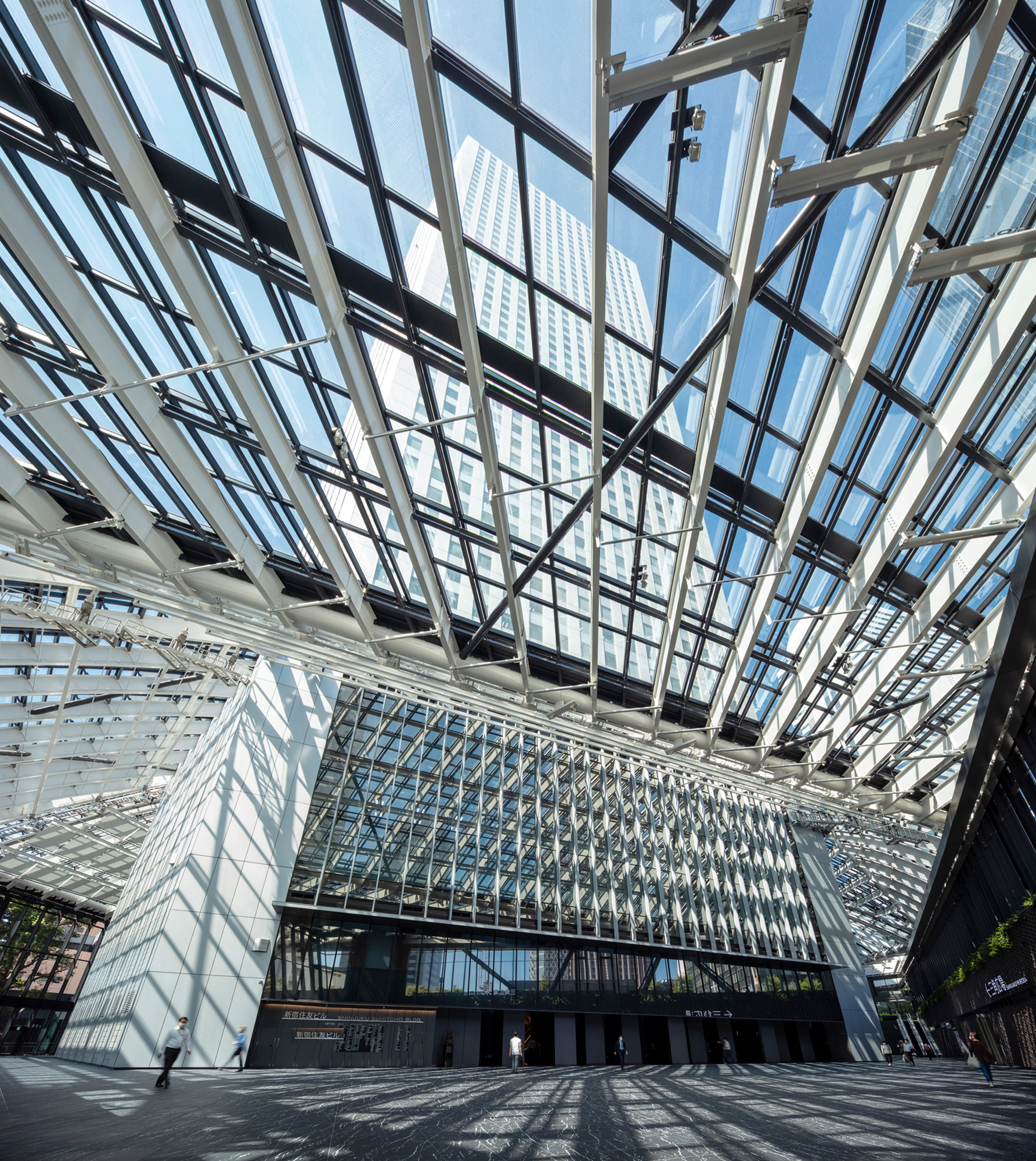

此外,在架设大屋顶的同时还进行了减震加固,以应对长周期地震并提高了抗震性能。所采用的减震系统利用原有的设备阳台,通过连续连接设于2层的减震器和3-49层的调谐杆(减震柱)联动建筑的运动以吸收能量。这样,在完全不影响大楼外观和办公空间的前提下,我们于大楼使用期间完成了减震翻新工程。
Concurrent with construction of the roof, seismic retrofitting was performed on the entire building to better counter earthquake-related effects and vibration. Using the building’s existing equipment balconies, second floor inertial rotary damping tubes were installed to connect up to the 49th floor in order to absorb the building’s kinetic energy. All of the tasks were performed without disturbing the building’s exterior or office workspaces.
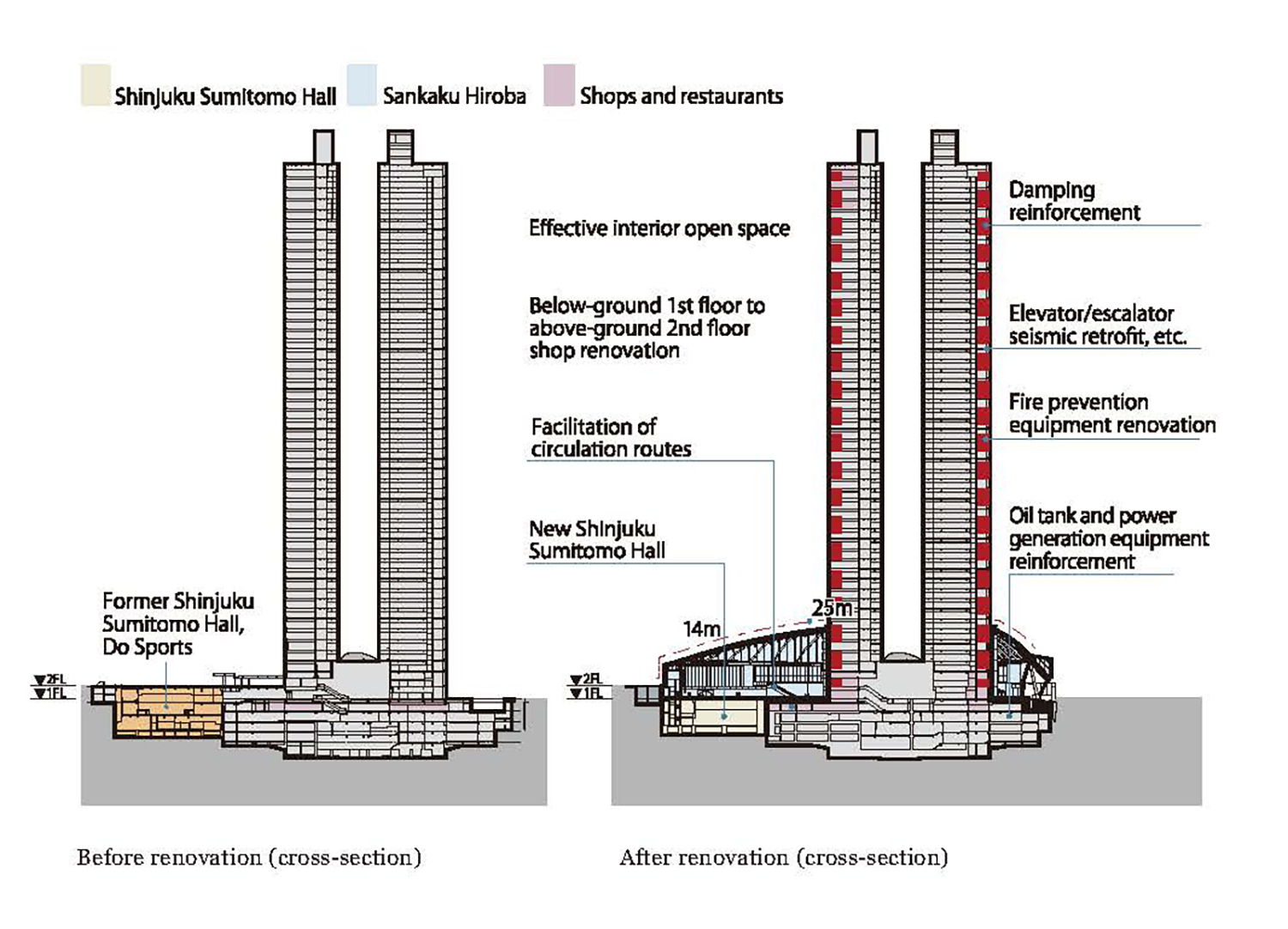

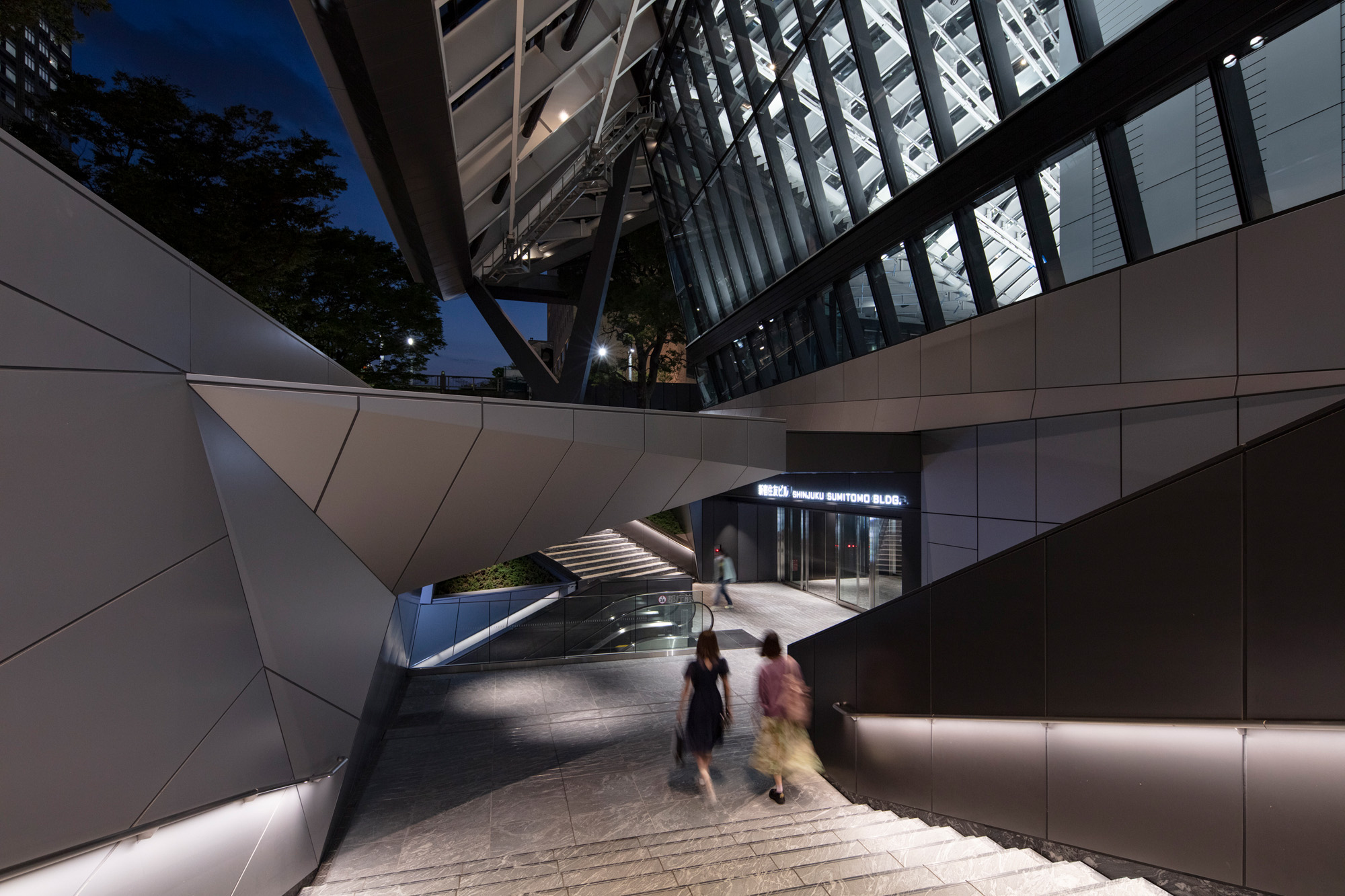
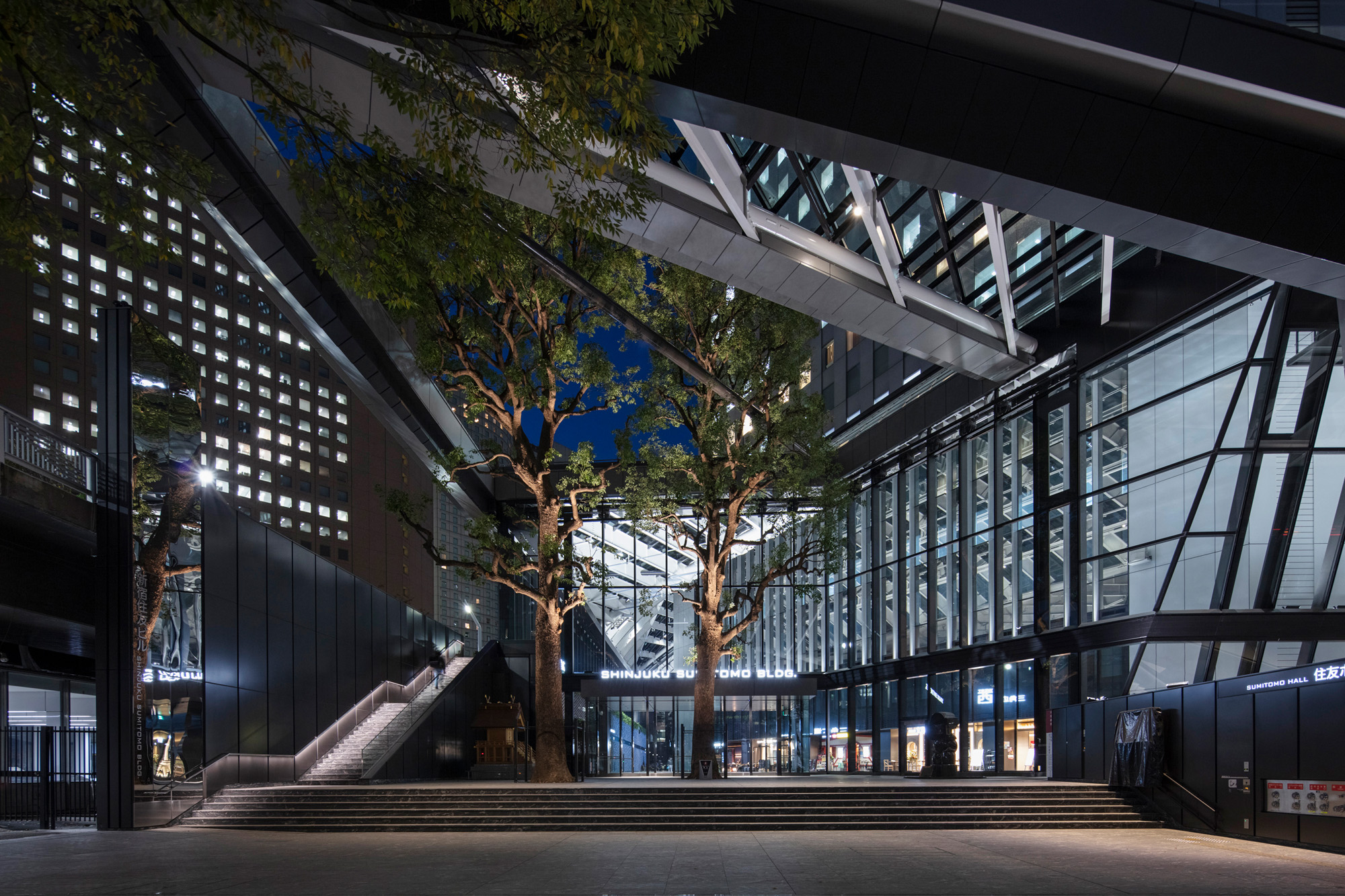
延续往日风景,重新设计人们熟悉的遗产
新宿住友大厦以“三角大厦”的昵称深受人们的喜爱,其原因不仅在于其独特的外观,还在于令人印象深刻的内外装饰。本次设计中,我们在继承和尊重长期以来深入人心的景观要素,并在此基础上构建出了新的空间。
The Shinjuku Sumitomo Building has long been affectionately called the “Sankaku (triangle) Building,” both for its distinctive outward appearance and for its striking interior and exterior detail. For this project, new spaces that respect the legacy landscape were redesigned.
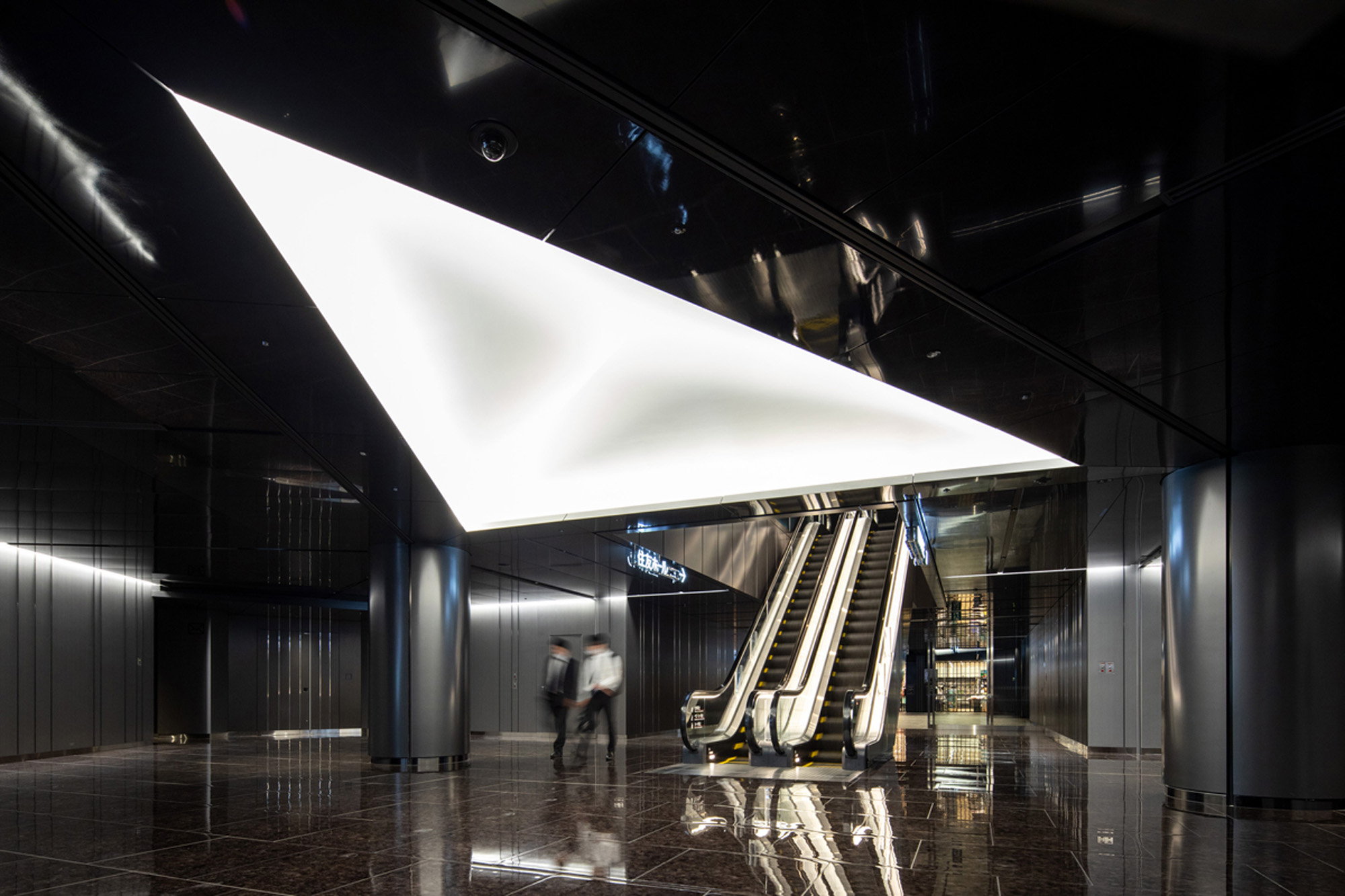
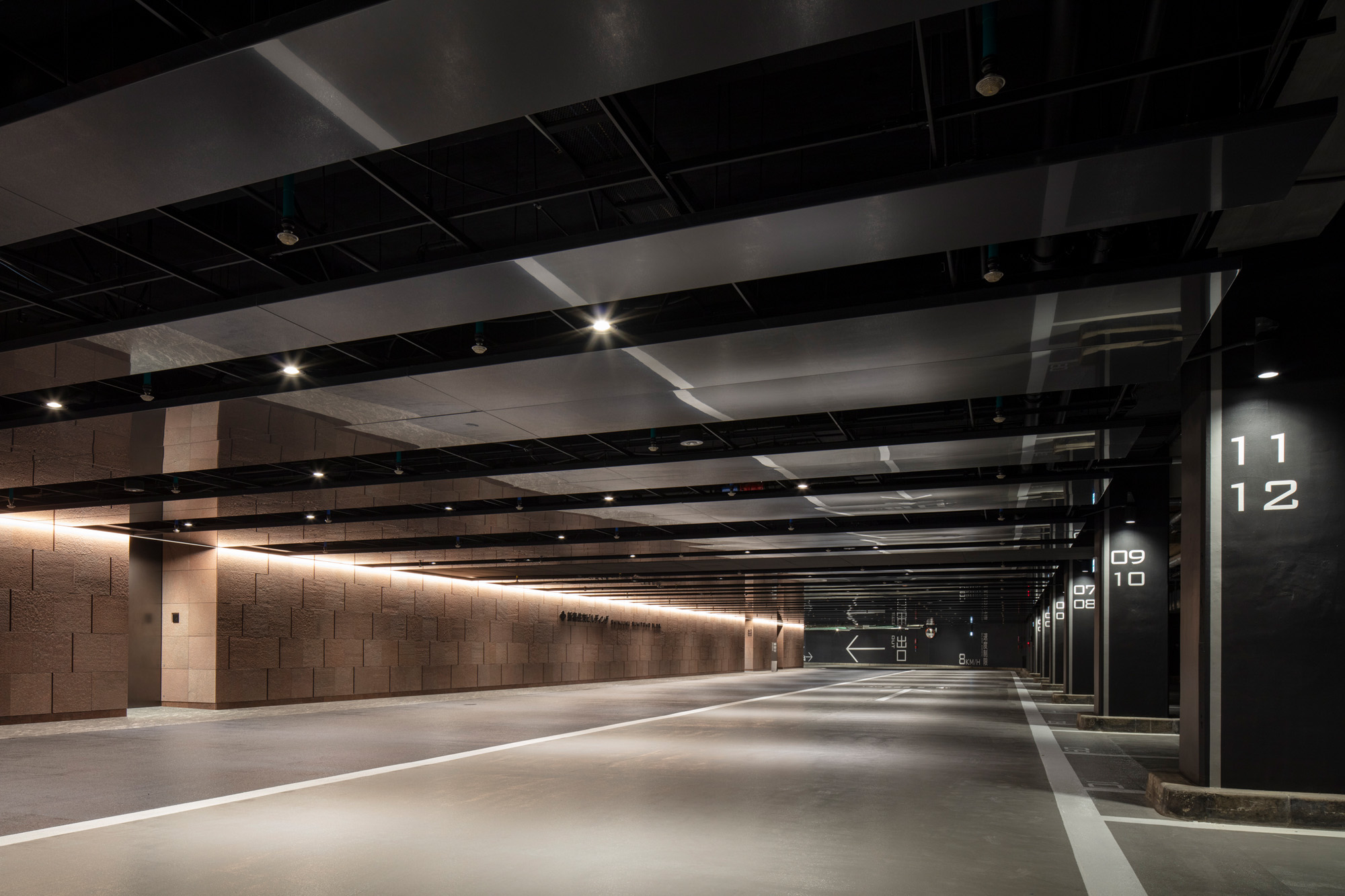

比如,原用于外构中现已无法开采的红色花岗岩,我们将其重新用于门廊入口处的墙面;因广场空间转变为室内空间,不再适合保留象征淀桥净水场建筑的砖砌外墙,我们将其作为集成空调、吸音、绿化等功能于一身的砖砌叠层建材加以使用。通过这些手法,我们在继承的基础上重新设计了这里的风景。
For example, red granite formerly used in the exterior (now no longer mined) was reused in the walls of the vehicle entrance. Bricks from the former outer wall design (inspired by the Yodobashi Purification Plant’s brick motif) were “recreated” using laminated bricks that integrate air conditioning, sound deadening, and wall greenery functions.


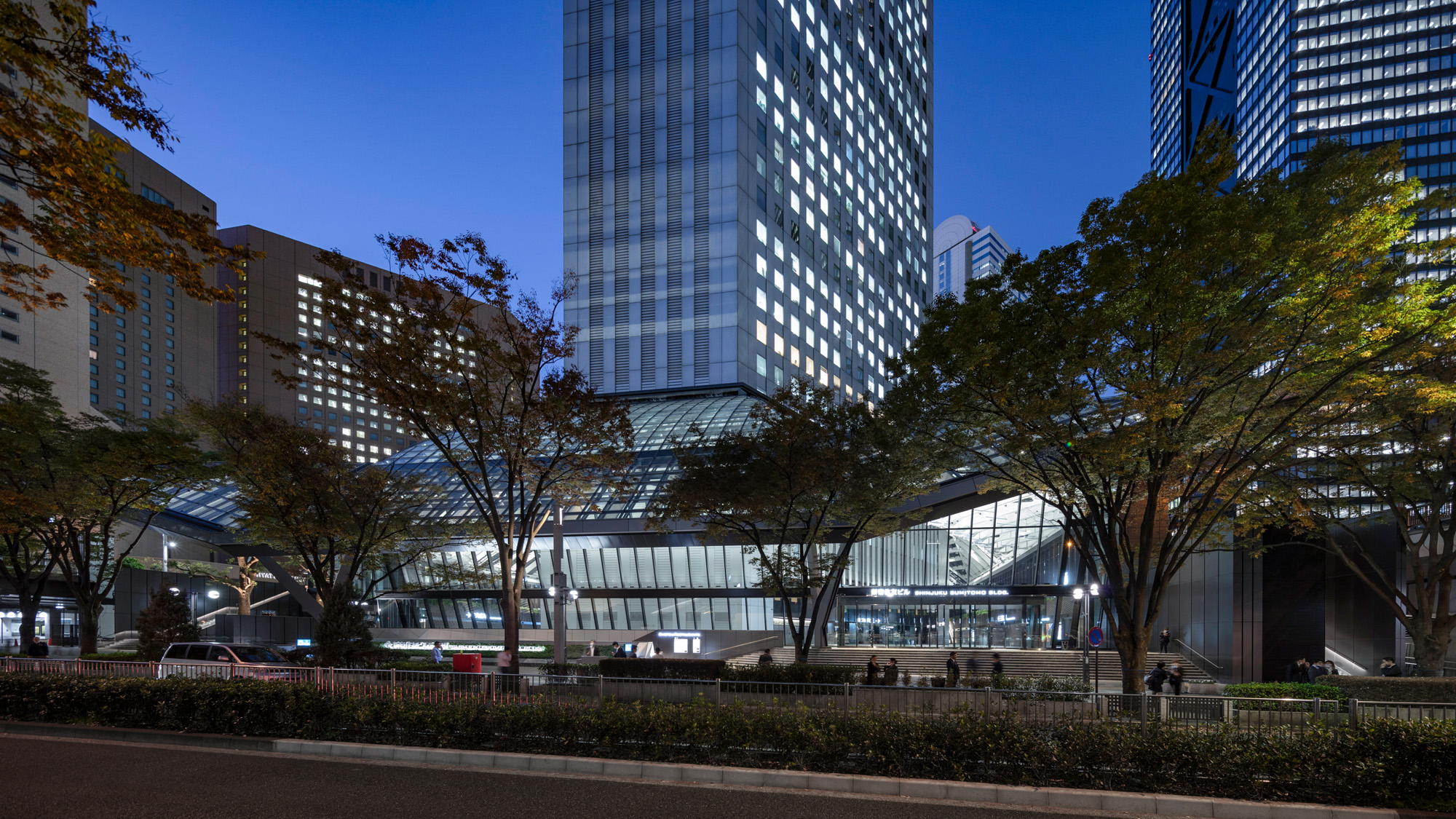

完整项目信息
项目名称:新宿住友大厦・三角广场
项目位置:东京都新宿区
项目用途:办公、礼堂、餐饮、零售、博物馆
项目业主·基本构想·综合监修:住友不动产株式会社
基本设计·实施设计:日建设计
实施设计:大成建设一级建筑士事务所
用地面积:14,446平方米
建筑面积:180,195平方米(包括中庭约6,700平方米)
建筑层数:地下4层、地上54层(阁楼3层)
建筑高度:211.35米
主体结构:S / RC / SRC(减震结构)
竣工日期:2020年
施工单位:大成建设
版权声明:本文由日建设计授权发布。欢迎转发,禁止以有方编辑版本转载。
投稿邮箱:media@archiposition.com
上一篇:牛奶巧克力泵房 | Wutopia Lab
下一篇:东台图书馆综合体改造:多变的层次 / 上海和睿规划建筑设计